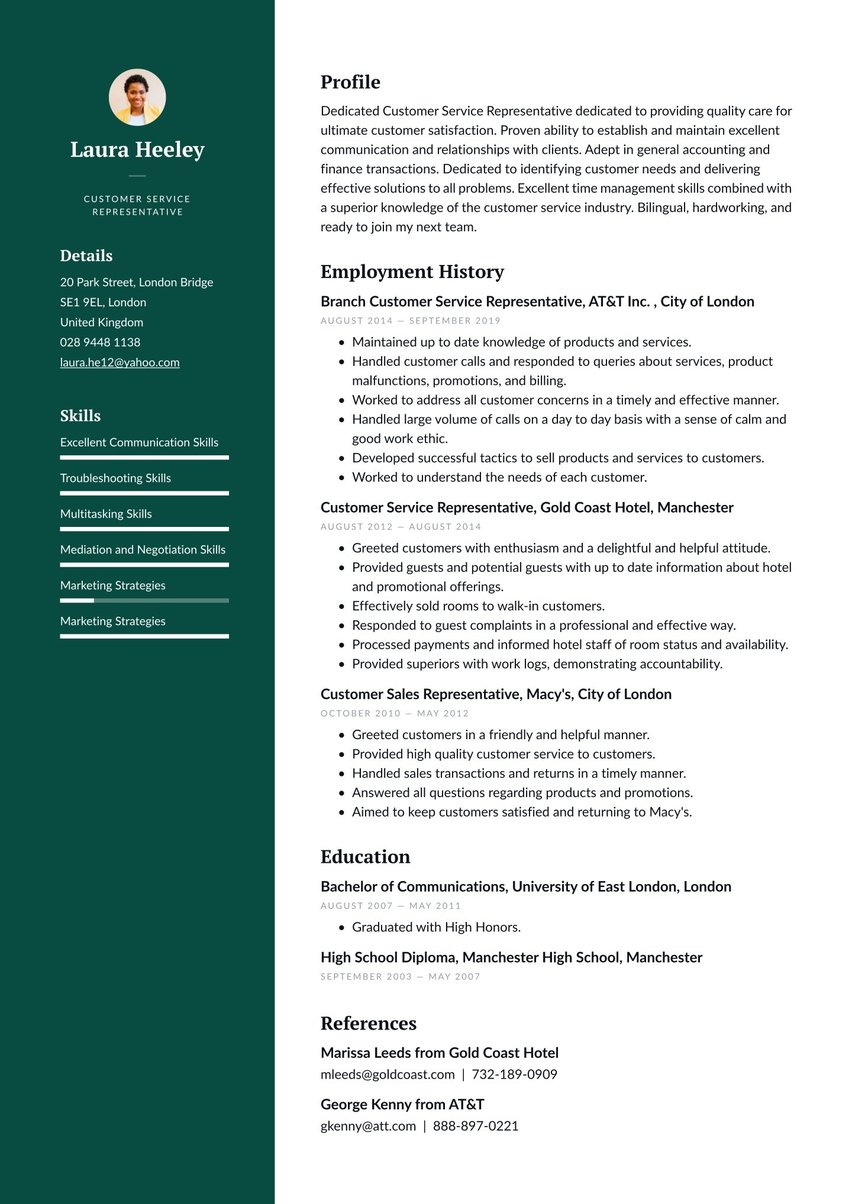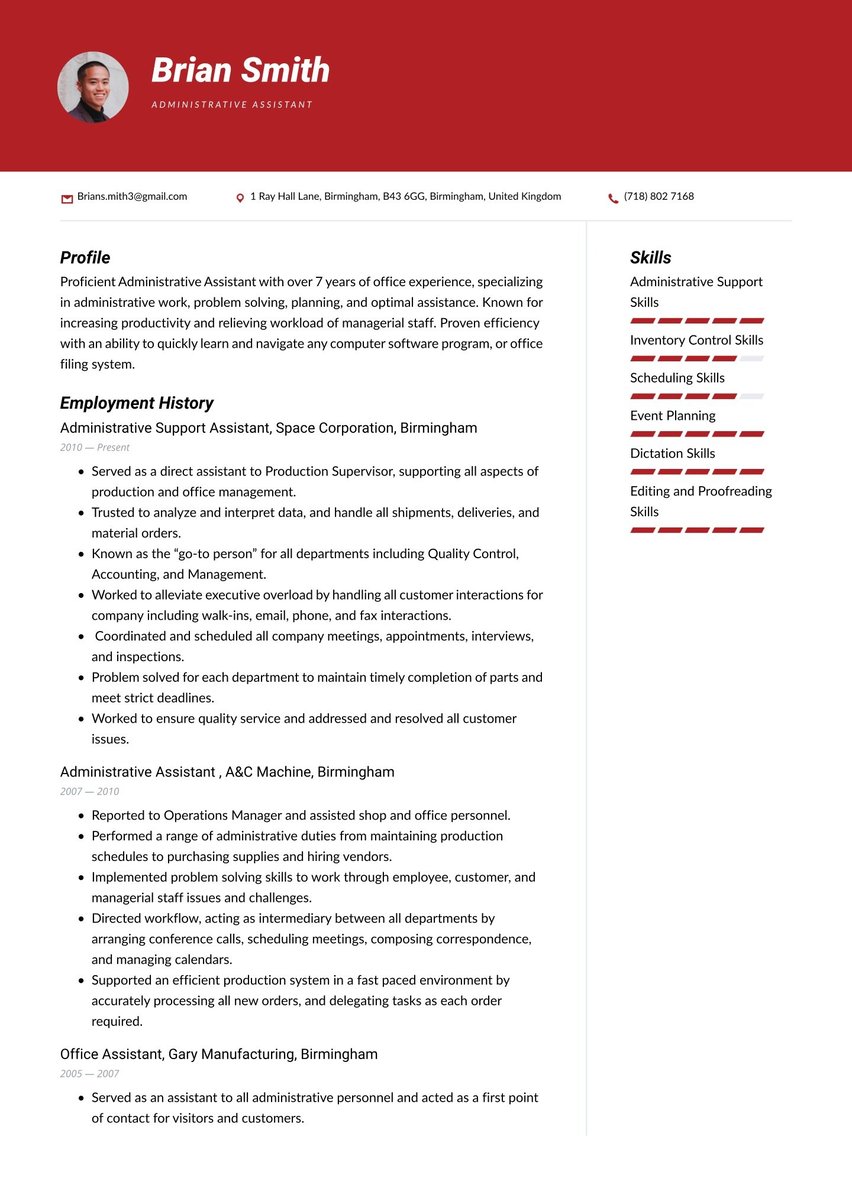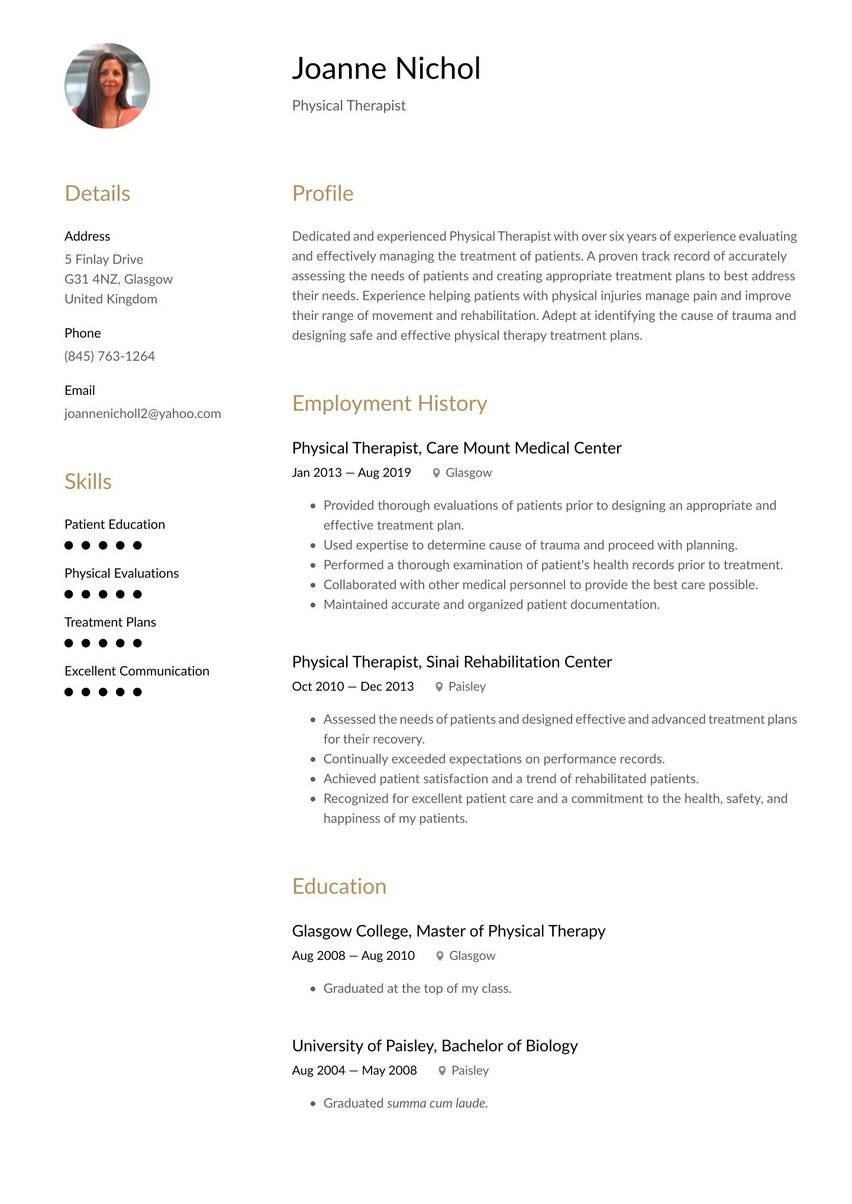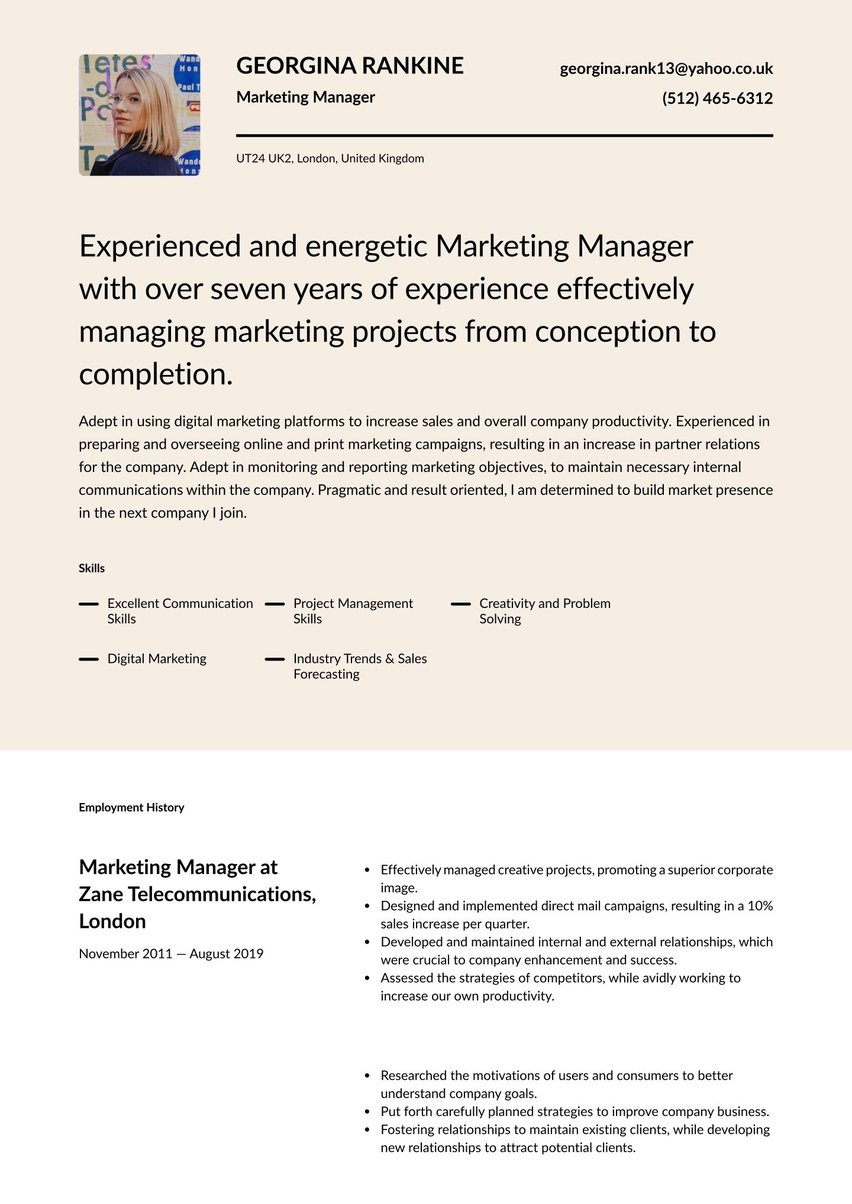Goal-oriented corporate executive with history of success in overseeing strategy development and execution for global companies. Expertly lead international teams of executives, senior managers, and individual contributors. Well-honed ability to build consensus with key stakeholders to focus on a common vision and achieve long-term goals.
07/2016 - present, Chief Executive Officer, Unilever, Gloucester
- Head overall corporate strategy for a multinational firm in partnership with CFO, COO, and members of the board.
- Liaise with regional leadership to steer execution and ensure alignment with overall corporate vision, mission, and goals.
- Deliver presentations to board of directors and other key stakeholders regarding performance, high-profile initiatives, and future opportunities.
- Collaborated with legal, finance, and operations teams to negotiate complex business deals with strategic partners.
03/2010 - 07/2016, Senior Director, Severn Glocon Group PLC, Gloucester
- Oversaw day-to-day operations and led team of five direct and 15 indirect reports, including managers, supervisors, and individual contributors.
- Communicated with finance team to forecast budgets and develop cost-control strategies.
- Participated in due diligence to evaluate M&A opportunities to expand market footprint.
- Business Strategy
- Change Management
- Revenue Growth
- Global Team Leadership
- Board Reporting
- Mergers & Acquisitions
- P&L Management
- International Expansion
A lucky few executives may get the job with a nod and a wink, but the vast majority need to justify their application with a track record of stunning success.
The ideal executive CV may be more about the strategy and top-line results, but achieving through others is no mean feat. Your executive CV should also demonstrate how you have helped your team to achieve results during the good times and the bad times.
If the CV reads like a boring list of accomplishments, you may miss out on an interview in favour of someone who shows more personality.
Read our guide geared specifically to the C-Suite, backed by an executive CV example you can adapt to your own situation.
CV guide for an executive CV
Improve your chance of success with resume.io. Our guides and CV examples cover over 170 professions, and our CV builder makes creating a convincing CV easier than ever.
This CV guide and corresponding executive CV example will cover the following:
- How to write an executive CV
- Choosing the right CV format for an executive
- How to add your contact information
- Using summaries
- Adding your executive work experience
- Listing education and credentials
- Picking the right CV design/layout
- What the executive jobs outlook looks like, and what salary you can expect
How to write an executive CV
Writing an executive CV is not so different from any other. While the magnitude of achievement is the deciding factor, much of the structure is the same. You will have read countless CVs yourself, so we are sure that you have a fixed idea about what your CV should look like. Nonetheless, a brief reminder of the typical structure won’t hurt.
Here are the essential components:
- The CV header
- The CV summary (aka profile or personal statement)
- The employment history section
- The CV skills section
- The education section
The task with an executive CV is to match the content to the challenge of the role that you are applying for. Each employer will have a very specific situation, so it has to be bespoke. While you cannot — and should not — make up your experience, there is a great deal of creative licence to match up the previous exploits of your teams with your future employer's goals.
Here’s how to present yourself as the best candidate:
- Highlight accomplishments. Avoid simply listing duties and responsibilities. Facts and statistics show your impact in previous roles and provide concrete evidence of your strengths and capabilities as an executive.
- Tailor your CV for every opportunity. Your executive CV should precisely match what the hiring organisation needs and wants. In every instance, the requirements listed in the job advert will guide your customised approach.
- Choose a professional format for your CV. Avoid design-heavy formats and fancy fonts that are distracting and can negatively impact readability.
- Optimise your CV with the right keywords to ensure you get past applicant tracking systems (ATS) and your CV reaches the eye of a recruiter.
How to optimise your CV for ATS
It may come as a surprise, but applicant tracking system software has power even over executive CVs. While you will likely come recommended by a headhunter, the ATS may still “score” your application for suitability. No one wants to have a low score, even if it is done by a substandard piece of software. Try to write your CV with a suitable number of keywords that align with the job description.
For example, a job posting for an executive may list the following requirements:
- “CFO, COO”
- “Business strategy, turnaround, and transformation”
- “P&L management”
- “Engaging with key stakeholders”
With the inclusion of relevant keywords, your professional summary might read:
“Seasoned CFO and COO, with a history of success steering business strategy, turnaround, and transformation for global tech companies. Exercise robust P&L management in line with commercial objectives. Provided leadership and mentoring to global teams, while simultaneously engaging with key stakeholders”
If you’re looking for more information on building a CV that gets past ATS scanners, check out our article to find out more.
Choosing the right CV format for an executive professional
There is no doubt that an executive CV will be a little longer than a mid-career professional, but the same format considerations apply.
You will be expected to list your roles in reverse chronological order in the work experience section, with a description of your role and bullet points for your accomplishments. Your most recent positions will be of most interest to a hiring manager. If you have had a long career, you can slim down the roles that are older and maybe even just include the position title and time that you were in the role. Focus on the most relevant and recent experience.
There is no definitive way to lay out a CV, so there is plenty of scope for individuality. The most important consideration is to keep it professional. Steer clear of tacky graphics or bold colours. Let your career do the talking.
Check out our CV templates if you need some inspiration and choose the format that best suits your situation. We also have many versions available as CV examples that you can review.
When deciding on the design of your executive CV, keep it simple. Hiring managers receive hundreds of CVs following a job posting, so make their life easier with a straightforward and easy-to-read format,
Include your contact information
Your CV header is the focal point for identifying information that hiring managers notice and retrieve easily when they want to get in touch. Besides visually distinguishing your CV from others, an eye-pleasing header design makes everything else on the page look inviting to read.
This impact is reinforced when your cover letter design matches, notably in the header. Here are the main things you need to include:
- Full name & title. List your full name, followed by the title of the role you are pursuing.
- Professional email address. Use an active and professional email address, such as firstname.lastname@email.com.
- Phone number. Share the phone number you’re most likely to answer, complete with a professional voicemail message.
- Location. Hiring managers don’t need to know your full address. You can simply provide your city or general location or a ‘Willing to relocate' if applicable.
- LinkedIn. Include a link to your LinkedIn profile so employers can quickly review. Just remember to check your profile is updated.
Don’t include:
- Personal details: Don’t include your age, date of birth, whether you’re married, or your nationality on your CV. This can lead to issues such as age discrimination.
Zadie Desilva
Chief Executive Officer
London, UK
020 384 2783
zadie.desilva@email.com
Z.C. Desilva
Executive
10 Cedar Grove, London, UK
0203842783
zanyzadie@email.com
Married, 2 kids
Make use of a summary
The CV summary showcases your biggest achievements as an executive. Take care to focus on the sorts of issues that you will be expected to tackle in a future role. It is normal for an executive CV summary to be tailored for every position – just as you might tailor a cover letter. If the employer does not read something that solves their issues in those first few lines, your candidature will not progress.
Think of the CV summary as a condensed elevator pitch. If you were in a small room with the entire board of your future employer, what would you say in one minute to convince them to hire you? It needs to be that convincing. Every word matters.
Include some high-profile achievements with context and financial impacts. Nothing talks like money, so make sure that you are sharing numbers that are impressive for your future employer. Growth in profitability and market share will get you into that interview room.
How will your executive colleagues, healthcare teams, and patients benefit if you are hired? Off the top, your CV profile should speak to the heart of what this employer needs and values most. Your “Why hire me?” appeal should reflect what you know about the place, the people and how you would fit in. From that perspective, the profile—sometimes called the summary or personal statement—is a snapshot of your most relevant and relatable qualifications.
After reading your profile, recruiters should feel compelled to read the rest of your CV. This is your chance to present the image of a dedicated, skilled, and successful executive, giving recruiters the sense that it would be a big mistake not to shortlist you for an interview.
If you’re looking for some inspiration to create your summary, view our related CV examples:
You can find an adaptable executive CV example summary below:
Goal-oriented corporate executive with history of success in overseeing strategy development and execution for global companies. Expertly lead international teams of executives, senior managers, and individual contributors. Well-honed ability to build consensus with key stakeholders to focus on a common vision and achieve long-term goals.
Outline your executive work experience: your pathway to success
Your employment history is certainly the most important section of an executive CV. The board wants to hire someone with a consistent track record of success, so every previous role needs to scream success. Leaders can have a lucky break thanks to market forces and economic conditions, but to deliver over a long period at different companies is more difficult.
Use bullet points to good effect in this section as it is likely that you will want to tell a variety of stories. When reading a bullet point, you forgive the concise style in a way that your eye cannot in a continuous stream of prose. Select your action verbs carefully and include plenty of figures and growth percentages.
It may be that you have a mix of permanent and consultancy (interim) roles in your employment history but treat them the same way. What was your job and what did you deliver? Most executive CVs will be written in reverse chronological order with the most recent experience at the top of the CV. Try to include at least a couple of roles on the first page as this will give your future employers plenty of reason to turn the page.
Take a look at the executive employment history CV sample below:
Chief Executive Officer at Unilever, Gloucester
July 2016 - Present
- Head overall corporate strategy for a multinational firm in partnership with CFO, COO, and members of the board.
- Liaise with regional leadership to steer execution and ensure alignment with overall corporate vision, mission, and goals.
- Deliver presentations to board of directors and other key stakeholders regarding performance, high-profile initiatives, and future opportunities.
- Collaborated with legal, finance, and operations teams to negotiate complex business deals with strategic partners.
Senior Director at Severn Glocon Group PLC, Gloucester
March 2010 - July 2016
- Oversaw day-to-day operations and led team of five direct and 15 indirect reports, including managers, supervisors, and individual contributors.
- Communicated with finance team to forecast budgets and develop cost-control strategies.
- Participated in due diligence to evaluate M&A opportunities to expand market footprint.
Include the relevant key skills that make a great executive
Executives have such dense skills that there is little that they cannot do. The skills section of the CV is therefore less important for them than for more junior employees to single them out as candidates. Nevertheless, there are ways of using this ever-present section to their advantage. You need to take every opportunity to stand out.
One way in which an executive can utilise a skills section is to share some of their rarer technical skills that may come in handy in future projects. A CMO with programming skills will be invaluable on an AI project and a COO with big data skills will put them into practice when the time comes to oversee a complex project. What skills do you possess that your competition does not? Be creative here, but only include skills that you can back up.
The executive skills you bring to bear are as integral to any given job application as your work experience. There will never be enough CV space to list all of the key skills you’ve devoted countless hours to learning and practising. But be sure to include core skills mentioned in the listed job description—possibly one more ATS-proofing opportunity to use keywords.
If you need some pointers on the types of skills to include on your CV, check out our CV builder which provides examples of in-demand skills as well as proficiency levels you can adjust.
Here’s what the skills box looks like in our executive CV template.
Key Skills and Proficiencies
Listing skills is straightforward, but providing tangible evidence makes a stronger impact. When crafting your executive CV, make sure to support each skill with concrete examples. Connect each key skill to a specific situation and its positive result.
This approach will capture the attention of recruiters more effectively. For instance, in your professional profile and work experience sections, emphasise your:
- Industry expertise by sharing your success in driving business growth and improvement via robust financial control and acute commercial acumen.
- Focus on continual improvement by mentioning your role in special projects and initiatives to optimise existing systems and processes.
- Self-awareness by utilising your strong communication skills to engage with diverse clients, teams, and key stakeholders.
Detail your education & relevant certifications
All executives know the value of a quality education. Many will have taken MBAs at some point during their careers and some continue to add to their education as they move from industry to industry. Adopting an attitude of “always learning” is so important in many industries, so this section should not be neglected.
Even if you have an MBA (or similar further education qualification), don’t omit your university degree. You may not wish to include the year when you graduated (for age discrimination reasons), but including your university and degree is standard for even senior executives. Your employer will see it on your LinkedIn profile, anyway. You never know who might be an alumnus — give yourself a chance to make that connection.
The education section of your executive CV is quite straightforward. In reverse chronological order, from highest to lowest level, simply list your degree and additional postgraduate training you’ve completed. Secondary school information can be omitted.
Beyond your formal qualifications, you should also list any additional training or professional development activities:
- Training and certifications. Speciality training, conferences, and workshops show you’re committed to professional development.
- Awards and honours. Notable awards and accolades demonstrate that you’re a trailblazer in your chosen field.
- Professional memberships and affiliations. Registration with professional bodies in your industry should be included on your CV.
Check out the education section from our adaptable CV sample below:
Master of Business Administration, University of York, York
Bachelor of Science in Finance, Cranfield University, Milton Keynes
Pick the right CV layout and design for an executive CV
The layout of your executive CV won’t be “make or break” in terms of your chances, but if you consider that the recruitment process will be a long one and that countless future colleagues will read your CV before you are hired, it is worth making sure that it looks the part.
Don’t get too creative with the graphic design, keep the colours minimal and make sure that there is plenty of white space amidst the fantastic career stories. The choice of template that you use can make a difference.
- An orderly page layout, divided into cohesive, clearly labelled sections, ensures that recruiters can readily spot essential information in the expected location. You can opt for a one or two-column layout.
- Strive to optimise the white space offsetting text-dense black blocks. Sticking to the default one-inch margins takes care of this on the outer edges of the page, while adequate line and paragraph spacing allows breathing room throughout.
- Legibility should also guide your CV font choices. Stay with the same font style and size for all body text, and only one compatible style for header text and section titles.
For a hassle-free way to get all of the layout and design details just right, consider using one of resume.io's field-tested CV templates with our builder tool. The professional, classic or corporate templates would be a great option.
Executive text-only CV example
Profile
Goal-oriented corporate executive with history of success in overseeing strategy development and execution for global companies. Expertly lead international teams of executives, senior managers, and individual contributors. Well-honed ability to build consensus with key stakeholders to focus on a common vision and achieve long-term goals.
Employment history
Chief Executive Officer at Unilever, Gloucester
July 2016 - Present
- Head overall corporate strategy for a multinational firm in partnership with CFO, COO, and members of the board.
- Liaise with regional leadership to steer execution and ensure alignment with overall corporate vision, mission, and goals.
- Deliver presentations to board of directors and other key stakeholders regarding performance, high-profile initiatives, and future opportunities.
- Collaborated with legal, finance, and operations teams to negotiate complex business deals with strategic partners.
Senior Director at Severn Glocon Group PLC, Gloucester
March 2010 - July 2016
- Oversaw day-to-day operations and led team of five direct and 15 indirect reports, including managers, supervisors, and individual contributors.
- Communicated with finance team to forecast budgets and develop cost-control strategies.
- Participated in due diligence to evaluate M&A opportunities to expand market footprint.
Chief Executive Officer at Unilever, Gloucester
July 2016 - Present
- Head overall corporate strategy for a multinational firm in partnership with CFO, COO, and members of the board.
- Liaise with regional leadership to steer execution and ensure alignment with overall corporate vision, mission, and goals.
- Deliver presentations to board of directors and other key stakeholders regarding performance, high-profile initiatives, and future opportunities.
- Collaborated with legal, finance, and operations teams to negotiate complex business deals with strategic partners.
Senior Director at Severn Glocon Group PLC, Gloucester
March 2010 - July 2016
- Oversaw day-to-day operations and led team of five direct and 15 indirect reports, including managers, supervisors, and individual contributors.
- Communicated with finance team to forecast budgets and develop cost-control strategies.
- Participated in due diligence to evaluate M&A opportunities to expand market footprint.
Skills
- Business Strategy
- Change Management
- Revenue Growth
- Global Team Leadership
- Board Reporting
- Mergers & Acquisitions
- P&L Management
- International Expansion
Education
Master of Business Administration, University of York, York
Bachelor of Science in Finance, Cranfield University, Milton Keynes
Executive job market and outlook
C-suite positions have increased by 36% over the past 16 years and, with the surge in start-ups in London and across the UK, this trend will continue. Diversity is increasingly prized at board level and non-executive roles are common for those approaching the end of their careers. Many executives venture into the entrepreneurial space for themselves, with some then returning with extra experience in the corporate world.
Boards are expanding in size to reflect the complexity of the modern organisation and the way that technology is changing markets. Even roles such as chief happiness officer and chief content officer are becoming increasingly popular.
The Parker Review has been tasked with assessing diversity across executive boards. The review found 68% of FTSE 250 companies have at least one minority ethnic director on the board and 15% of all respondents self-identify as being minority ethnic. In terms of non-executive roles, women now represent 53% of positions since a decade ago.
Key takeaways for building an executive CV
No matter how experienced an executive is, a stellar CV is the gateway to a new role. Ensure you offer a broad appeal to the range of senior leaders who will be reading the CV. Make sure your CV spotlights your achievements through your people — few executives can take the credit themselves. Tailor the CV to each role so that you stand out from your competition.
Ready to get started? Check out our professionally-designed CV templates and use this hassle-free approach to create a high-quality document that looks as good as it reads.

































